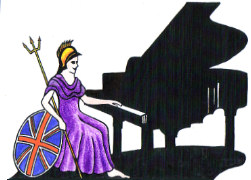Teachers, Accompanists and Piano Entertainers in the UK

UK Piano Page

Browse Locations England » Greater Manchester » Pendlebury
Harrogate Road
Beamsley Hill
Skipton, North Yorkshire BD23 6HZ
England
Main dealers for Kemble Pianos. Complete range
The Hurst Crouch
Borough Green
Sevenoaks, Kent TN15 8TA
England
We offer some of the lowest prices in Europe for
Unit 60 The Triangle
Wolverton Park
Milton Keynes, Buckinghamshire MK125FJ
England
We are a family run music shop in Wolverton,
121-125 Royal Avenue
Belfast, County Antrim BT1 1FF
Northern Ireland
The Belfast music scene has been quietly turning
Donaghadee, County Down BT21 0NL
Northern Ireland
We have a high quality range of New andAs-New
Music Festival for performers and guests Our 10th
18-06-2022 01:30PM
The Morecambe Bay Piano Group was set up to extend
11-12-2021 02:00PM
The Morecambe Bay Piano Group was set up to extend
08-01-2022 02:00PM
The Morecambe Bay Piano Group was set up to extend
12-02-2022 02:00PM